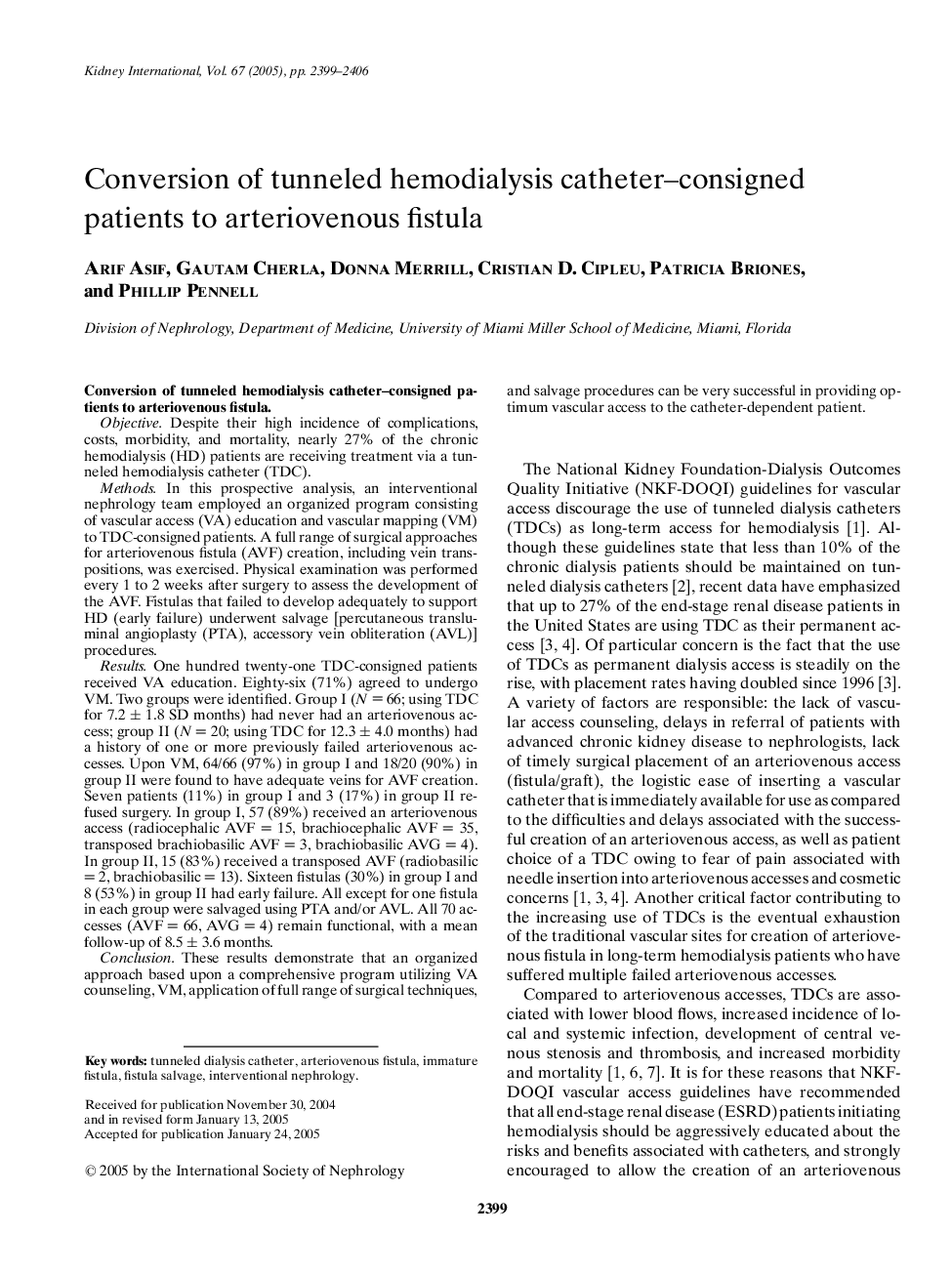| کد مقاله | کد نشریه | سال انتشار | مقاله انگلیسی | نسخه تمام متن |
|---|---|---|---|---|
| 3890257 | 1249710 | 2005 | 8 صفحه PDF | دانلود رایگان |

Conversion of tunneled hemodialysis catheter–consigned patients to arteriovenous fistula.ObjectiveDespite their high incidence of complications, costs, morbidity, and mortality, nearly 27% of the chronic hemodialysis (HD) patients are receiving treatment via a tunneled hemodialysis catheter (TDC).MethodsIn this prospective analysis, an interventional nephrology team employed an organized program consisting of vascular access (VA) education and vascular mapping (VM) to TDC-consigned patients. A full range of surgical approaches for arteriovenous fistula (AVF) creation, including vein transpositions, was exercised. Physical examination was performed every 1 to 2 weeks after surgery to assess the development of the AVF. Fistulas that failed to develop adequately to support HD (early failure) underwent salvage [percutaneous transluminal angioplasty (PTA), accessory vein obliteration (AVL)] procedures.ResultsOne hundred twenty-one TDC-consigned patients received VA education. Eighty-six (71%) agreed to undergo VM. Two groups were identified. Group I (N = 66; using TDC for 7.2 ± 1.8 SD months) had never had an arteriovenous access; group II (N = 20; using TDC for 12.3 ± 4.0 months) had a history of one or more previously failed arteriovenous accesses. Upon VM, 64/66 (97%) in group I and 18/20 (90%) in group II were found to have adequate veins for AVF creation. Seven patients (11%) in group I and 3 (17%) in group II refused surgery. In group I, 57 (89%) received an arteriovenous access (radiocephalic AVF = 15, brachiocephalic AVF = 35, transposed brachiobasilic AVF = 3, brachiobasilic AVG = 4). In group II, 15 (83%) received a transposed AVF (radiobasilic = 2, brachiobasilic = 13). Sixteen fistulas (30%) in group I and 8 (53%) in group II had early failure. All except for one fistula in each group were salvaged using PTA and/or AVL. All 70 accesses (AVF = 66, AVG = 4) remain functional, with a mean follow-up of 8.5 ± 3.6 months.ConclusionThese results demonstrate that an organized approach based upon a comprehensive program utilizing VA counseling, VM, application of full range of surgical techniques, and salvage procedures can be very successful in providing optimum vascular access to the catheter-dependent patient.
Journal: Kidney International - Volume 67, Issue 6, June 2005, Pages 2399–2406